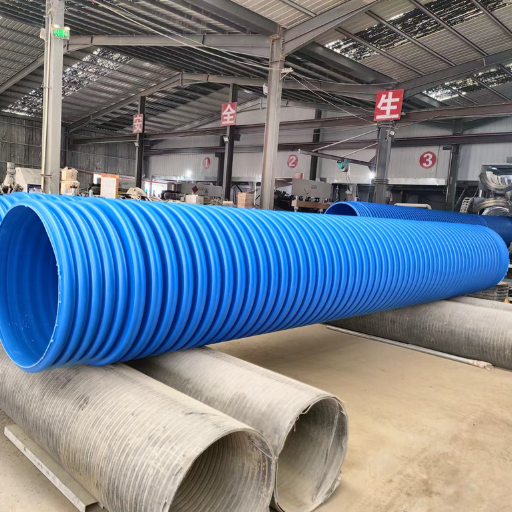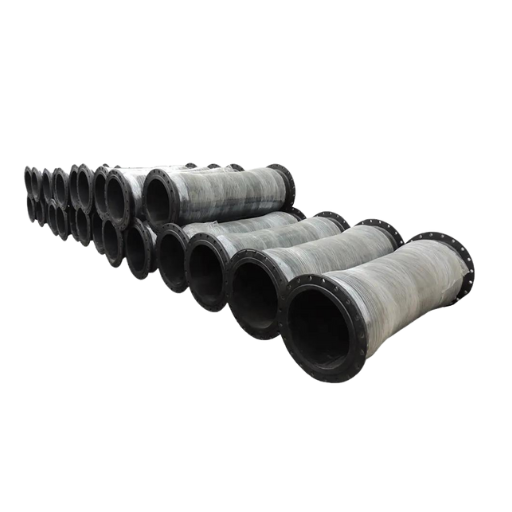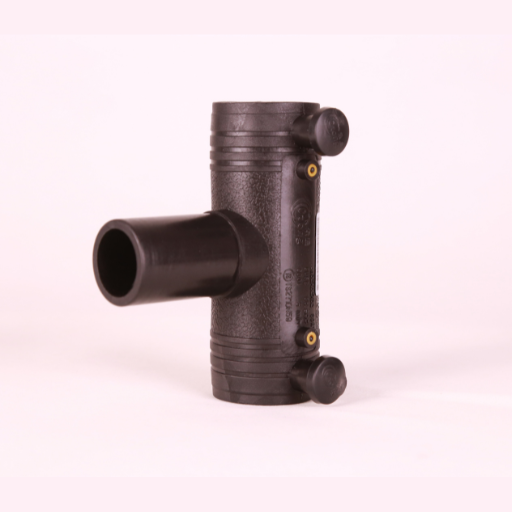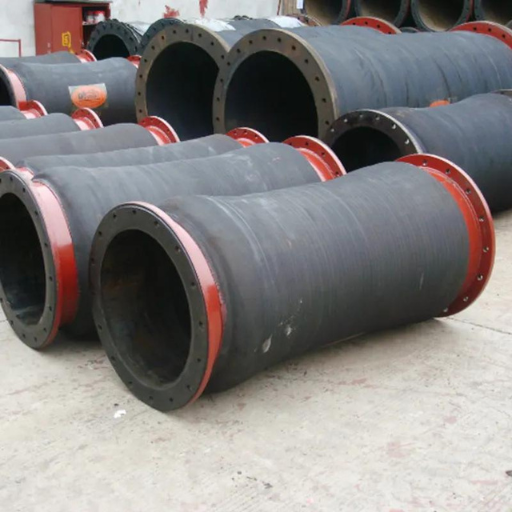High-density polyethylene (HDPE) pipes have become a popular choice for various applications due to their durability, flexibility, and resistance to corrosion. As the demand for effective piping solutions grows, understanding the methods used to join these pipes is essential for ensuring system integrity and longevity. This article will explore the most common joining techniques for HDPE pipes, including butt fusion, electrofusion, and mechanical fittings, highlighting their advantages and ideal use cases. By familiarizing yourself with these methods, you can make informed decisions when selecting the appropriate joining technique for your specific project needs.
What are the Most Common Methods for Joining HDPE Pipe?

Understanding Butt Fusion for HDPE Pipe Joining
Butt fusion is extensively used as a technique of joining HDPE pipes, which involves heating two pipe ends until they soften and then pressing them together to form a strong connection. This method provides an uninterrupted link with minimal leakages and the highest strength levels, thus making it the best for high-pressure applications. The procedure often demands specialized apparatus like heating elements and alignment fixtures, among others, to guarantee accurate temperature control and precision in joining. Among other things, butt fusion is beneficial in situations involving large-diameter pipes commonly used in water and gas supply systems within municipalities due to its reliability and effectiveness. Proper training and adherence to industry standards are essential for achieving optimal results with butt fusion joining.
Exploring Socket Fusion Techniques
Another effective way by which HDPE pipes may be joined is through socket fusion, especially for small-diameter applications. In this case, the female socket of a fitting and the end of the pipe have to be heated until they reach a set temperature at once. The hot tube inserted into the socket becomes one part when cooling occurs, creating a bond between the materials. Simply, nature allows quick installation, making it popular on projects that require fast installation because the time consumed during installation is always money lost. Additionally, socket fusion presents minimum leakage and provides good-quality joints, which will help prevent leaks, especially when handling fluids. Nonetheless, choosing the right size fitting and ensuring surfaces are clean before performing the fusing operation should precede this process for the best outcomes.
What is Electrofusion Welding?
Electrofusion welding refers to a technique that uses electrical current applied to join polyethylene (PE) pipes and fittings. In such cases, there is usually a coil embedded inside a fitting so that when electricity passes via it, there will be heat generation at the interface between their materials, i.e., a thermoplastic blend of pipe-fitting combinations melts together at its boundary. This creates a bond between the materials, solidifying when it cools down. Furthermore, this process is particularly suitable in scenarios where other fusing techniques are problematic, such as in narrow areas or where pipe sizes are big enough. Electrofusion has been proven to have very high joint integrity. It has become widely known for its effectiveness and dependability in gas distribution for water supplies or other applications. Correct methods and proper equipment must be considered to achieve good results during electrofusion welding.
What is the Process of Butt Welding HDPE Pipes?
Steps Involved in Butt Fusion
Preparation: Ensure that the ends of the HDPE pipes to be joined are cut square and cleaned thoroughly to remove any contaminants like dirt or oxidation. This is important as it leads to a strong weld.
- Heating: The prepared pipe ends are then positioned against a heated plate. The temperature must be controlled so the polymer material starts melting but does not overheat. The heating time will depend on the diameter and wall thickness of the pipes.
- Joining: When an appropriate melt state is achieved, the heating plate is removed, and two pipe ends under controlled pressure are brought together. This pressure must be maintained during a certain cooling period for a proper bond.
- Cooling: Following joint formation, it is pressurized until it solidifies entirely as it cools off. This cooling phase is crucial since it maintains the integrity and strength of any joint formed.
- Final Inspection: After cooling, inspect for defects or irregularities, which would certify if correctly fused; hence, make sure such connection can withstand working pressures.
By observing these steps, butt fusion can create durable and reliable joints necessary for HDPE piping systems.
Advantages of Butt Welding for HDPE
Butt welding has many benefits for HDPE piping systems. First, this method ensures that sturdy and permanent connections can resist high temperatures and pressures, thus maintaining the overall system’s integrity. Secondarily, installation time and labor costs are reduced by being fast since there isn’t much waste produced from this process apart from precise lengths being joined together without incorporating extra attachments like fittings. Moreover, with no seams, they minimize flow resistance and their chances of leaking, making them ideal for critical applications such as water supply utilities or gas distribution industries.
How Does Electrofusion Work for HDPE Pipe Connections?

Benefits of Using Electrofusion for Joining HDPE
Electrofusion offers numerous benefits for joining HDPE pipes, making it a preferred method in various applications. One of the primary advantages is its ability to create solid and leak-proof joints that maintain the structural integrity of the piping system. The process is less sensitive to environmental conditions, allowing for reliable connections even in challenging situations, such as below-freezing temperatures or moist environments. Additionally, electrofusion fittings can be used with various pipe dimensions and wall thicknesses, providing versatility in installation. The method also reduces the need for heavy equipment and elaborate setups, facilitating faster installations and minimizing labor costs while ensuring consistent quality across joints.
Common Applications of Electrofusion in Pipeline Systems
Electrofusion is widely applied in various pipeline systems, particularly in water supply, gas distribution, and industrial processes. In water supply systems, it is used to connect HDPE pipes seamlessly, ensuring a leak-free network that can withstand pressure fluctuations. Electrofusion provides secure and reliable joints for gas distribution, crucial for maintaining safety standards and preventing leaks. In industrial applications, electrofusion is utilized for transferring chemicals and other fluids, as it accommodates a range of pipe sizes and thicknesses while ensuring durability and resistance to corrosion. This versatility makes electrofusion an essential method for modern pipeline infrastructure.
What are the Advantages of Using HDPE Pipe Joining Methods?

Reliability and Longevity of HDPE Joints
The durability and reliability of HDPE joints are well-known, mainly because the material is highly resistant to corrosion, chemicals, and environmental stresses. With a low density and high strength, HDPE pipes can resist high pressures and extreme temperatures and are suitable for long-term applications. Moreover, seamless joints formed by electrofusion, among other methods, have fewer points of weakness that could break down or let out fluid, thereby enhancing the overall integrity of a pipe network. This extended lifespan plus minimal upkeep costs reduce life cycle costs while promoting sustainable infrastructure. In addition, it has flexibility, which enables it to accommodate ground movement, especially in seismically active areas or areas with unstable soils.
Affordability of HDPE Pipe Systems
Compared to conventional materials, HDPE pipe systems make more financial sense because they have reduced installation and maintenance costs. One reason why HDPE is considered lightweight is that it leads to fewer handling difficulties when being installed, hence reducing labor costs. Furthermore, the service life span of HDPE pipes is longer, coupled with its immunity to corrosion, therefore minimizing the need for frequent replacements or repairs. Additionally, compared to other piping materials, fluid flow through HDPE systems tends to be highly efficient, thus lowering energy consumption-related operating expenses. An initial capital outlay on HDPE can result in substantial savings over time during operation within a pipeline lifetime period.
What are the Applications of HDPE Pipes in Different Industries?

Water Supply Systems and HDPE
In my experience, HDPE pipes are crucial elements in modern water supply systems, given their toughness and dependability. They are popularly employed to transport drinking water because they do not contaminate it with harmful substances. Moreover, the ability of HDPE to resist corrosion and biological growth reduces pollution risks during extended usage periods. I have seen that HDPE is a ligriskshduring t characteristiperiods enables installation, especially in complex urban areas where flexibility allows for handling varying terrains. IntegratingE in water supply systems enhances efficiency and durability, thus providing sustainable alternatives for towns and utilities.
Using HDPE for Irrigation Projects
In my experience, irrigation projects increasingly use HDPE pipes because of their excellent strength and environmental resistance. They can effectively withstand harsh weather conditions, including soil erosion, ensuring that the irrigation system stays as it was put in place over a considerable period. This means that they can be installed easily on different types of surfaces, such as gardens or large farms, making them suitable for both small-scale and large-scale agricultural applications, respectivelyy. Furthermore, their smooth interior surfaces enhance the efficiwaefficientw , reducingreducingrequired during pumping and consequently lowering operational costs. In summary, using HDPE in irrigation helps improve water delivery efficiency and supports sustainable agricultural practices by conserving resources.
Reference sources
- Exploring HDPE Pipe Joining Methods
- How is HDPE pipe most commonly joined?
- Methods of joining polyethylene and PE100 pipes
These sources cover various joining techniques such as butt fusion, socket fusion, saddle fusion, and electrofusion, ensuring a comprehensive understanding of the topic.
Frequently Asked Questions (FAQs)
Q: How does HDPE pipe jointing by heat fusion work?
A: Heat fusion is the process of heating the surfaces of 2 HDPE pipes until they melt, then joining them under pressure and allowing them to cool and become rigid.
Q: What does a fusion machine do concerning connecting HDPE pipes?
A: What it does is that it heats the surfaces of both HDPE pipes and fittings in the process of butt welding, hence ensuring uniformity within the joints.
Q: Can you describe how electrofusion welding works on HDPE pipes?
A: In this case, strong joints are made when an electric current passes through the coil encased in the fitting, which fuses both pieces.
Q: Why do you need proper surface preparation for HDPE pipe welding?
A:Correct surface preparation is very important during HDPE pipe welding because it helps ensure cleaner, less contaminated surfaces, leading to stronger, more reliable joints.
Q: What should be considered when selecting a method for joining HDPE pipes?
A:These include pipe size, application requirements, environmental conditions, and the specific connection type that suits the project specification.
Q: How can using polyethylene (HDPE) plastic piping systems benefit infrastructure applications?
A: For instance, corrosion resistance and high fluidity are some of the benefits obtained through the use of high-density polyethylene (HDPE) plastic piping systems in infrastructure projects.





